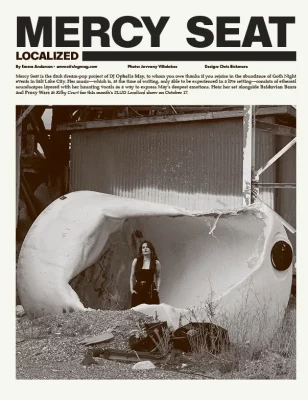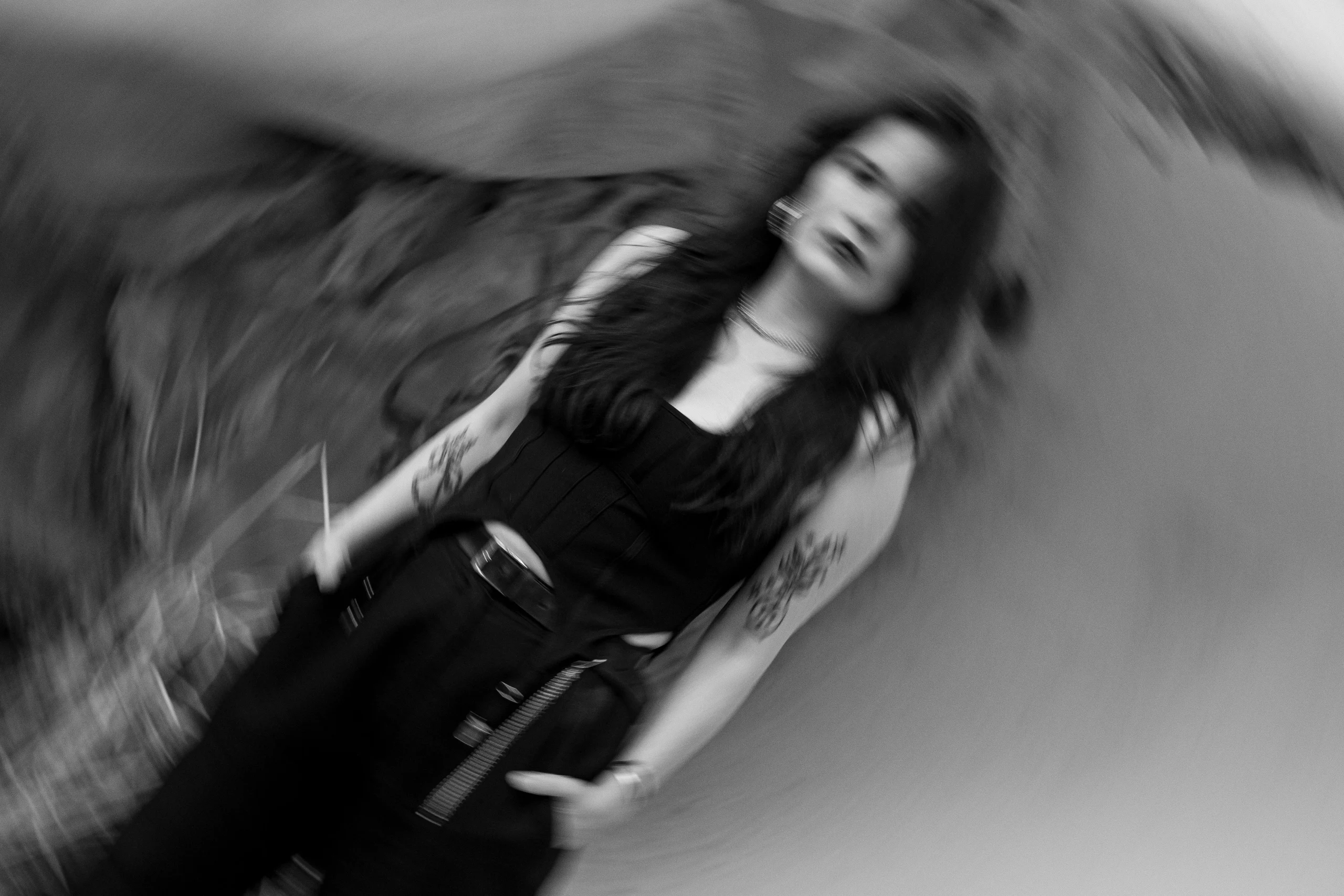
Localized: Mercy Seat
Localized
Embrace spooky season with this synth-forward lineup for the ghouls and goths! Mercy Seat and Balduvian Bears co-headline this enchanting evening of darkwave, with Proxy Wars opening up the show at 8:00 p.m. Tickets are just $5 for this all-ages show at Kilby Court sponsored by Riso-Geist.
For those rejoicing in the fresh abundance of Goth Night events in Salt Lake City at venues like International and The Beehive, Ophelia May is one person you owe thanks to. Often delivering hypnotic, post-punk and darkwave DJ sets eponymously as Ophelia, she is also the powerful force behind Mercy Seat, one of Salt Lake City’s finest dream-pop acts with a dark inclination.
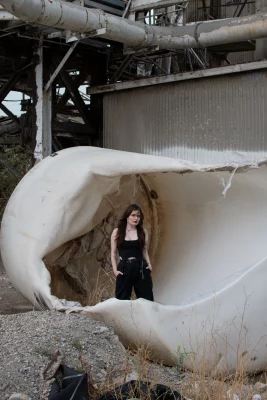
While she recalls—and alternative folks who lived here in the ‘80s onward can attest—that Salt Lake City’s goth scene is by no means new, she has noticed that in “the last few years especially it’s been really having a moment. Especially the DJ nights.” International Artist Lounge has garnered a level of local notoriety for its beloved Goth Nights, at which Ophelia made her DJ debut a couple of years ago. As “a huge electronic body music/industrial/darkwave nerd,” she gets a great deal of fulfillment from the opportunity to share that passion with others and have a strong hand in expanding that scene.
“Making music and performing can be so transformative and transcendental … Creating something I feel good about is so fulfilling,” says Ophelia. The most rewarding part is not only getting chances to play with artists she loves, but her creative, emotional outlet connects her with others who are moved by her work. Having felt “out of place” throughout her life, it’s been “so lovely finding community in other artists … Finding my people through music has been so special,” she says.
Raised by a father who spent years working in radio, Ophelia learned to appreciate the diversity and intricacies of music from a young age. She credits her “eclectic taste” to the wide variety of music she listened to growing up, citing Joy Division, New Order, Cocteau Twins and Kate Bush as early favorites who continue to inspire her to this day. Discovering industrial and EBM was formative for Ophelia, whose affinity for synthesizers permeates all of her work, even as her tastes began to lean more experimental in recent years.
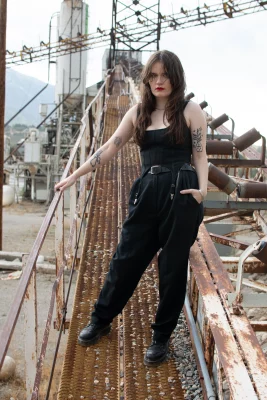
“Making music and performing can be so transformative and transcendental … Creating something I feel good about is so fulfilling.”
Ophelia’s approach to creating music is, in some ways, unconventional, as she explains that “most of [her] songs have existed for years in different iterations.” Her process follows inspiration more than a calculated process. “Sometimes I’ll have an idea for a melody or vocal line or lyrics I like come to me. Sometimes I’ll get inspired by music I love; other times it comes from just jamming and seeing if anything sticks,” she explains. Synths and drums often come first, but occasionally, notebooks full of lyrics are the catalyst for creation. Her raw creative process creates Mercy Seat’s unique and beautifully haunting sound.
Ophelia’s eponymous DJ sets are “mostly high BPM and very danceable,” as opposed to Mercy Seat performances, which serve more as an emotional outlet with the energy a bit more withdrawn. Additionally, Mercy Seat showcases Ophelia’s mesmerizing, siren-esque vocal talent. In these varying manners of performance, Ophelia showcases the broad spectrum of industrial and darkwave as the soundtrack for both parties and times of melancholy.
“Sometimes I’ll have an idea for a melody or vocal line or lyrics I like come to me. Sometimes I’ll get inspired by music I love; other times it comes from just jamming and seeing if anything sticks.”
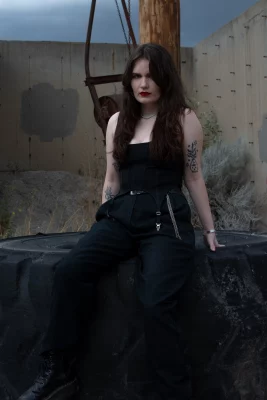
While Mercy Seat is primarily experienced as a live performance, this isn’t necessarily Ophelia’s intention. The lack of recorded material online currently is in large part due to her “own perfectionist tendencies” and the trickiness of navigating the recording process in a way that does her sound justice. In a way, this makes the chance to see a Mercy Seat show that much more special. The other “silver lining,” according to Ophelia, is that her focus on live performances has immensely aided her growth as an artist and performer. She also credits her on-stage experience for pushing the continued evolution of her music. Mercy Seat may soon be streamable, though, as Ophelia teases that she has plans to get in the studio after three years of live performances.
While Mercy Seat has accomplished a great deal already—including a Las Vegas performance, a music video and official merch—Ophelia looks forward to even more “firsts” as she begins making tour plans and continues to keep creating for the sake of seeing where it takes her and how she evolves. Witness the brooding, synth-driven glory of Mercy Seat live at Localized on Thursday, October 17. Follow Ophelia on Instagram at @opheliugh and @mercyseatslc for more shows and a forthcoming record.
Graphic Designer: Chris Bickmore
chrisbickmore.com | @bitterbuffalo1986
Walk us through how you created this layout. What inspired you when designing it?
The Mercy Seat layout was inspired by minimalist Scandinavian design. I knew I wanted it black and white and simple, because the picture was the opposite. I was also listening to Chat Pile a lot that week and all of their album covers are super clean and minimal, so that was a direct inspiration for me.
Tell us about your design background. How has your style evolved over time?
I have an associate’s [degree] from SLCC in Graphic Communications and I’m currently at the University of Utah for my bachelor’s. I [will] have designed for SLUG for three years in December. My style has evolved in that I branch out a bit more from what I am comfortable with. I try to do new things often and learn new things. I think I used to really pigeonhole myself into more of a retro style (which I still do a lot) but I actively try to break out of being repetitive.
What are some of your design inspirations or influences?
A lot of mid-century design is a big inspiration for me. I love looking through old magazines and record covers from the ‘50s, ‘60s and ‘70s and get a lot of inspiration from those. I am also influenced by punk and hardcore design, incorporating a lot of that influence into things I do.
What does your graphic design process usually look like?
It sort of depends on the project. If it’s something with a quick turnaround, I might hop into Pinterest just to get some ideas of what direction I would like to go in. I also try to familiarize myself with whatever or whoever I am designing for. I usually do the monthly Localized layout for SLUG and I always try to listen to the band first, [then] check out their social media and any album covers of anything they have released. I want it to fit with their vibe and aesthetic as much as possible. Then I just go for it and see what happens initially, and refine it. If it’s something that I have more time I still do all of that, but I spend a lot of time just thinking about it while I am doing other things, and then I have more time to really figure out exactly what I am going for before I even open my laptop.
What is your favorite aspect of graphic design?
When people get excited about things I design. I like the feeling of people connecting to something that I made. I think that’s really the rewarding part of being a designer or an artist is when people get excited about something you made alone in your house.
Read more SLUG Localized features:
Localized: Olivia Bigelow
Localized: fuckskin
